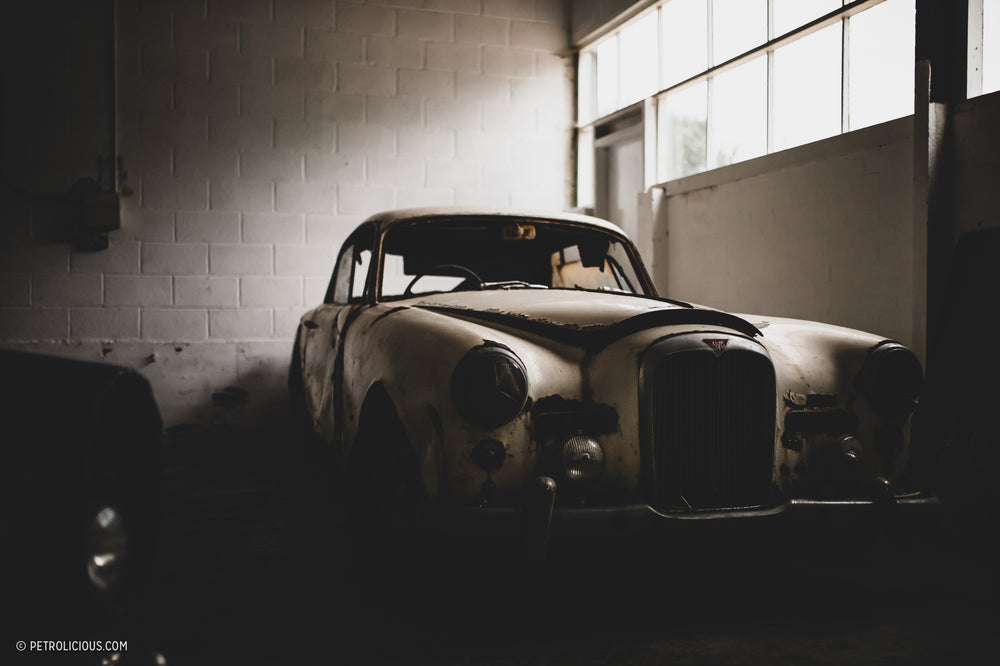The story of an automotive company rising from the ashes is hardly a new one, and I’m sure we’ve all got our favorite examples of famous names being resurrected and offered a new chance at life. These rebirths are typically followed by new models and a new direction under new management, with perhaps a few nods to the heritage. But what if a manufacturer picked up almost exactly where it left off, with decades in between?
What if sealed shutters were lifted, natural light let back in, and the dust and cobwebs were swept out—could they carry on with the work they had been planned to have done all those years before? Before the troubles, before the balance sheets fell dropped out equilibrium, and before the liquidators called time on the enterprise? It’s a romantic idea, but in a small pocket of industrialized England, that’s exactly what’s happening.



“Alvis Car Company – The Continuation Series.” It sounds grand, but really nothing less than grand would do for an automotive manufacturer whose cars were built on a reputation of outstanding coachbuilding and exceptional performance—not to mention technological innovations such as the world’s first all-synchromesh gearbox (in 1933!), independent suspension and servo-assisted brakes.
The company, founded by Thomas George John, started producing cars in 1919, and as well as the popularity with the car-buying public the famous red-triangle of Alvis found success at Le Mans and supplied cars to the great and the good, from HRH Duke of Edinburgh to Group Captain Sir Douglas Bader. Despite these merits, in 1967 the car production line at Alvis went silent (although the brand did continue military vehicle production under various guises until 2004). In 1967, all of Alvis’ passenger car interests were relocated to Kenilworth, including parts, engineering drawings, and customer correspondence.




They sat gathering dust until recently, when the company began manufacturing its famous 4.3 Litre models again as part of a continuation series that uses the recovered original plans and almost original specs, save for a very small number of safety and emissions-related parts. The entire story is a little more convoluted than that though, as the corporate hands that touch names and trademarks over the years in a story such as this are many, but the company does own the Alvis name again, and at the helm is company director Alan Stote, a man whose passion is immediately evident.
A true raconteur, it’s a wonder that I ever manage to get any work done whenever I visit the Alvis base in Kenilworth, such is Alan’s enthusiasm and knowledge when he gets going. I never mind of course, as the dialogue is fascinating to be a part of, but it’s just a precursor to the journey that awaits anyone fortunate enough to wander through the Alvis complex.





The showroom is magical in its own right, with cars from Alvis history as well as examples of the continuation models, not to mention a vast plethora of automobilia from the marque’s past. Behind each machine and object is a story, and behind each story is Alan, ready to furnish you with the facts and romance that belong to each and every thing you can point to.
The continuation series cars on display in the showroom offer the first glimpse into the factory’s past, as they are true continuations in every sense of the word, as Alan explains, “The factory had planned to build 150 4.3 Litre chassis in 1938. As the site suffered serious damage by bombing in 1940, only 73 chassis were completed, so we will continue that series, with new chassis, built to the original drawings and carrying VINs that pick up exactly where they left off.”





It is a sentence said with no small amount of pride, and after a short amount of time spent in the workshop with the team of traditionally skilled craftsmen that build these cars, it’s easy to see that this pride is something that is held dear by each and every person involved with the business, not only Alan.
The cars are built by hand, and it’s a transfixing experience to watch the team at work hand rolling the aluminum body panels fixed to the wooden formers and jigs before they are TIG-welded together. The engine room is also a fascinating one, where we can see the six-cylinder power plants being put together; and then there is the in-house trim shop, a dark art that I will never fully understand.






As they say, the “real magic happens” upon leaving the workshop floor and ascending up into the upper reaches of the building, where, for those that peer through the looking glass, corridor upon corridor of new old stock parts lay in wait, stored here just as they were in the 1960s. It is a seemingly endless warren of just about everything you would need to build an Alvis motorcar, sprawling out before you. I’ve seen more exotic bits of kit in the pits of modern motorsport, but this array of gear is uniquely mesmerizing. Everything is still catalogued and labeled, and it is this living history that has allowed Alvis to expand its continuation series to post-war machines, using the chassis and engine blocks that have been held in storage for all of these years.




The Alvis story is a special one, and thankfully there are still chapters to be written. I’ve not been lucky enough to try one on of these pieces of history the road just yet for obvious reasons to those reading this April of 2020, but suffice to say the cars I have seen on visits past carry the impeccable standards of quality and workmanship that were always associated with the marque the first time around.

























































